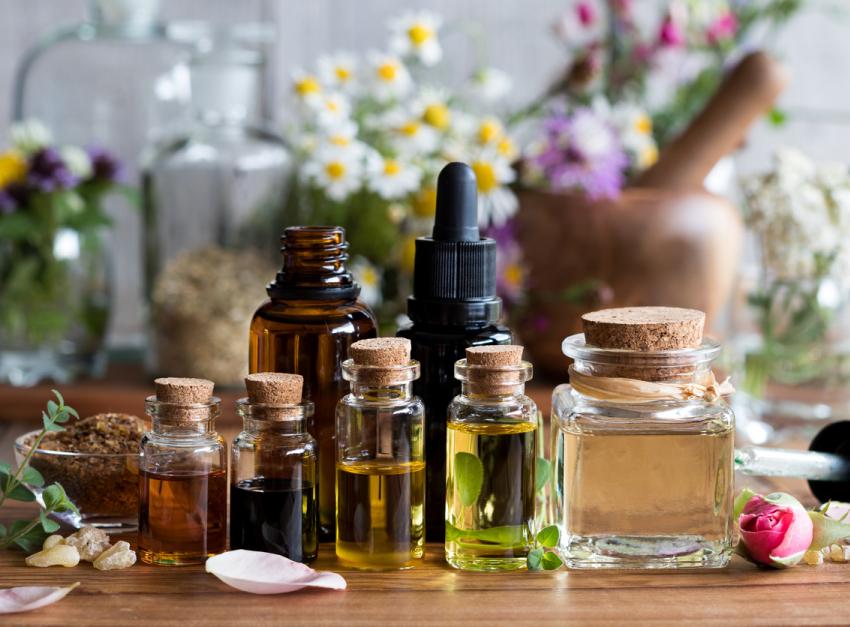
- Ali
Aromatherapy can help create a calm and soothing home environment, so often essential to our fast paced lifestyles. But where do you start?
I studied aromatherapy 20 years ago but like so much of my holistic practices and approaches to wellbeing that I kept up in my 20’s and early 30s I somehow let it go. Forgotten, my diffuser lay unused except for medical emergencies when one of us had a cold or breathing difficulties that I knew only steam and aromatherapy oils would calm.
Now in my 50s I’ve returned to aromatherapy as an effective way of treating anything from a general uneasiness with the world right through to maladies from anxiety to depression and even PTSD.
But how does it work?
Scent is a powerful psychological trigger. Our sense of smell ties directly to our limbic centre, or emotional centre, in our brain. This is why aromatherapy and essential oils can be beneficial to our health and well-being.
Whatever our current stressors — work deadlines, exams or school projects, relationship difficulties — creating an in-home oasis makes a huge difference. Combining fresh flowers, plants, and essential oils helps enormously in providing that safe, calm space to escape from it all.
I love that the tradition of making scent a fundamental part of the home has been revitalised with the latest trend in aromatherapy oils. It is a practice I highly recommend, and which I hope will live on in my family for generations to come.
Evidence from Ancient Egypt tells us that aromatic oils were likely being used before 4500 B.C. The ancient Egyptians are renowned for their knowledge of cosmetics and fragrant ointments as are the Greeks who used a blend of sage for its anti-inflammatory, brain-boosting properties.
As the Egyptians knew so well, oils have different properties that we need to consider. Some are heating, others cooling, and some resonate with us in different parts of our bodies. Essential oils are fashioned from the scents of nature — everything from pine trees to sandalwood to lavender. To get essential oils, flowering plant parts or peels must go through a distillation process. Naturally, some plants yield lots of oil easily, and others have more labour-intensive processes, yielding lower amounts of essential oil. This process is what determines the price an oil retails at. For instance, damascene rose is one of the most notoriously labour-intensive essential oils to distill, which is reflected in its high price tag. It takes approximately 2,500 pounds of rose flowers to produce 1 pound of essential oil!
What to consider
When trying to work out where to start always consider: What’s going on with you? Is your problem physical? Chronic or acute? Perhaps you can’t pin down a pain-point, but you’re looking to evoke a state of being, like relaxation or energy. Once you get to the crux of the issue you want to address, it’s much easier to whittle down the essential oil you need.
How to integrate Essential Oils in your home
An easy way to integrate aromatherapy into your everyday life is through diffusing. I turn to my diffuser for a multitude of reasons—when I want to set an ambience, reduce stress, support sleep, and increase alertness or motivation. Diffusion refers to a method of transmitting essential oils into the air within a specified area. Diffusing essential oils serves two purposes: reducing air microbes and altering mood and emotion. Research shows that diffused lemon essential oil is an affordable intervention that has a positive effect on anxiety while diffusing cinnamon, eucalyptus, and rosemary is an uplifting blend that serves as a safe way to keep your home’s air germ-free.
The rise in popularity of aromatherapy oils has unfortunately set the scene for unethical business practices as large corporate players drive raw material prices to low levels and adulteration of oils (e.g., cheaper essential oils substituted and falsely labelled or a completely synthetic laboratory-made oil labelled as wild-harvested) being common practice. That’s why I love the Arbonne Rescue and Renew Aromatherapy Oils. They come from a producer I know and trust who has green science and sustainability at the heart of everything they do.
Given current industry practices, you should also be wary of popular, gimmicky claims. Perhaps the most misleading is using the label "Therapeutic Grade." There is no such thing as "therapeutic grade" or "certified pure" essential oils. There is no regulatory body that scientifically evaluates and certifies the purity of essential oils – so they are just misleading catchphrases.
Arbonne pure Essential Oils are sustainably sourced from the seed, peel, stem, root and flower all carefully extracted using steam distillation or cold pressing techniques. Each oil can be diffused to create an aromatic surrounding or applied topically onto the skin.
Available in four single notes and four blends they have a place in every home.
Lemon – Promotes a cleaner and fresher scent in the air.
Peppermint – Promote an energizing yet peaceful surrounding.
Lavender – Promotes a relaxing and gentle environment.
Tea Tree - Promotes a cleaner and fresher scent in the air.
Focus Blend – A mindful blend of oils including rosemary, basil, and frankincense to promote a sense of focus for mind and body.
Harmony Blend – A sparkling bend of orange, lavender, rosemary and ginger to foster harmony and relaxation.
Evergreen Spirit Blend – An awakening blend of oils including orange, Siberian fir and wintergreen promotes a sense of peace, filled with festive aromas.
Warrior Blend – A spicy, warm fragrance of clove, cinnamon bark, and rosemary promotes a sense of wellbeing in the midst of changing seasons and environmental stressors. (Limited edition for the festive season).
For more information on Arbonne Rescue and Renew Essential Oils please contact me or order using the following link








